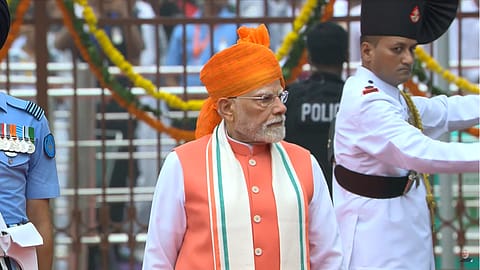FinMin proposes next-gen GST reforms on three pillars after PM Modi's announcement
Aimed at benefitting the common man and boosting economic activity, these changes are expected to be implemented by Diwali this year.

Following the official announcement by Prime Minister Narendra Modi during his Independence Day address, the finance ministry has released a detailed circular on the reformation of the Goods and Services Tax (GST), one of the most significant economic reforms since 2017.
Calling it a measure that has benefitted the common man, farmers, the middle class and MSMEs, the Prime Minister said the next generation of reforms under GST will be critical in advancing the goal of an Atmanirbhar Bharat.
“Key areas identified for next-generation reforms include the rationalisation of tax rates to benefit all sections of society, especially the common man, women, students, middle class, and farmers. Reforms will also seek to reduce classification-related disputes, correcting inverted duty structures in specific sectors, ensuring greater rate stability, and further enhancing ease of doing business. These measures would strengthen key economic sectors, stimulate economic activity, and enable sectoral expansion,” the ministry said in a statement.
Released on Friday, the Centre has now sent a detailed proposal to the Group of Ministers (GoM) constituted by the GST Council, outlining a reform package anchored on three pillars—structural reforms, rate rationalisation, and ease of living. According to PM Modi’s speech, the reforms are expected to be introduced by Diwali this year.
The proposal emphasises correcting inverted duty structures that create input tax credit accumulation, a step aimed at supporting domestic value addition and improving competitiveness. It also seeks to resolve long-standing classification disputes by streamlining rate structures and simplifying compliance, thereby reducing litigation. Another key focus is providing long-term clarity on rates and policy direction to ensure stability and predictability for businesses, strengthening industry confidence and enabling better investment planning.
The Centre has proposed rationalisation of tax slabs with the objective of simplifying the structure into two key rates, standard and merit, with special rates reserved only for select items. This would replace the existing multiple-slab system, making compliance more straightforward. Lowering taxes on common-use goods and aspirational products has also been identified as a way to improve affordability and boost consumption. Further, with the end of the compensation cess, fiscal space has opened up, offering flexibility to align rates sustainably under the GST framework.
The reforms also target improving ease of compliance, particularly for small businesses and startups. Key measures include seamless, technology-driven and time-bound registration processes, the rollout of pre-filled returns to reduce manual intervention, and faster, automated refunds for exporters and those affected by inverted duty structures. These steps aim to cut down delays, reduce mismatches, and strengthen trust in the system.
Recommended Stories
The Centre has said it will work in close coordination with the states to build consensus on the proposed measures, in line with the spirit of cooperative federalism. The GST Council, in its upcoming meetings, is expected to deliberate on the GoM’s recommendations. The government has indicated its intent to facilitate early implementation so that the benefits can be realised within the current financial year.